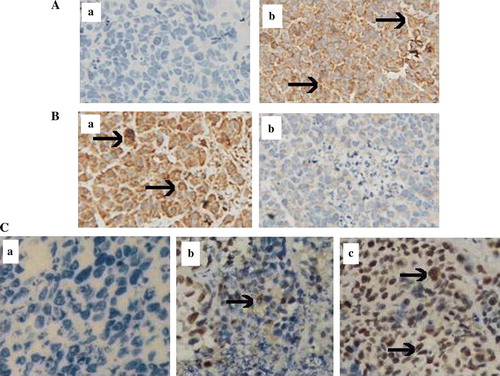Figures & data
Figure 1. Western blot analysis and quantification of XIAP protein levels by the Odyssey Infrared Imaging System. Relative expression of XIAP was detected in normal cell line (NHLF), HEK293 and HCC cell lines (BEL7404, SMMC7721 and MHCC97-H) (A). Evaluation of siRNA-mediated XIAP knockdown by infecting with ZD55-XIAP-shRNA (sh-XIAP), ZD55-shRNA control (sh-NC), or ONYX-015 was performed in human HCC cell lines BEL7404 (B), SMMC7721 (C) and MHCC97-H (D).
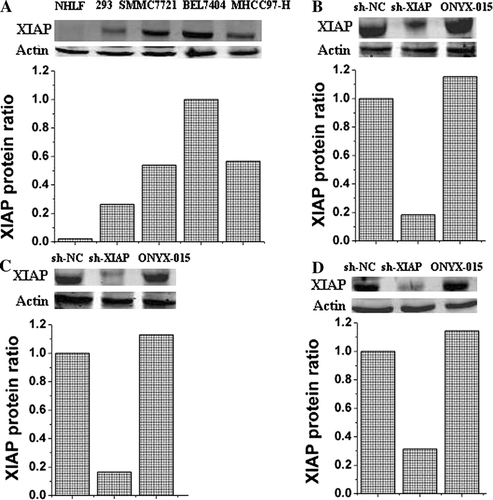
Figure 2. Selective replication of ZD55 in vitro. Tumor cells (BEL7404, SMMC7721 and MHCC97-H) and normal cells (NHLF and L-02) were infected with ZD55-XIAP-shRNA, ZD55-shRNA control, ONYX-015 or Ad-wt. After 48 h, medium and cells were collected and subjected to three freeze–thaw cycles. The collected supernatants were tested for virus production by standard plaque assay on HEK293 cells.
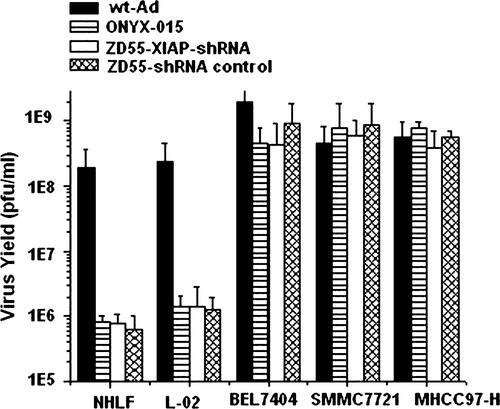
Figure 3. The tumor selective cytotoxic effect of ZD55-XIAP-shRNA. Tumor cell lines BEL7404 (A), MHCC97-H (B) and normal cell lines NHLF (C) and L-02 (D) were infected with Ad-wt, ONYX-015 or ZD55-XIAP-shRNA at the indicated MOIs. Five days later, cells were stained with crystal violet.
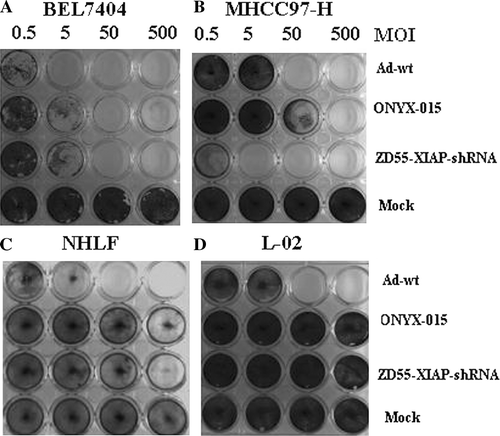
Figure 4. Synergistic antitumor activity of ZD55-XIAP-shRNA and ZD55-TRAIL in human HCC cells. Tumor cells BEL7404 (A), SMMC7721 (B) and MHCC97-H (C) and normal cells NHLF (D) and L-02 (E) were infected with ZD55-XIAP-shRNA (▾), ONYX-015 (7), ZD55-TRAIL plus ZD55-XIAP-shRNA (▪) and ZD55-TRAIL plus ONYX-015 (7). Cell viability was determined by MTT assay. Data was presented as means±SD as three independents (p < 0.01).
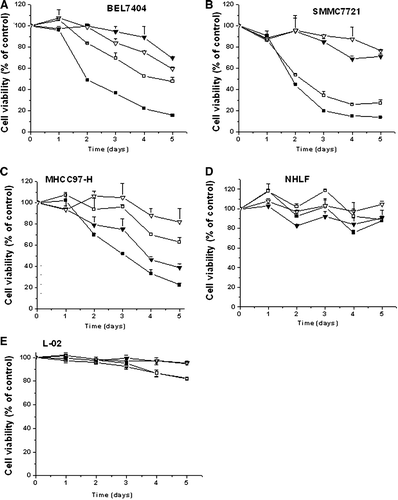
Figure 5. Antitumor efficacy of ZD55-XIAP-shRNA and/or ZD55-TRAIL in BEL7404 xenograft tumor. When the tumor reached 100–200 mm3, animals were treated with an intratumoral injection of 1×109 pfu per animal of ZD55-XIAP-shRNA (▾), ONYX-015 (7), ZD55-TRAIL plus ZD55-XIAP-shRNA (▪), ZD55-TRAIL plus ONYX-015 (7), or PBS (:) as a control (the first injection indicated by arrow). The tumor size was measured and tumor volume was calculated as: length×width2×0.5. Data are expressed as means of tumor volume±SD (n = 8).

Figure 6. Immunohistochemical and apoptotic study in vivo 7 day post-treatment with viruses. A immunohistochemistry was performed in the tumor sections by reaction with the primary antibody against TRAIL, group b treated with ZD55-TRAIL plus ZD55-XIAP-shRNA displayed much higher TRAIL expression than group a treated with PBS as control. B XIAP expression level in vivo, group b treated with ZD55-TRAIL plus ZD55-XIAP-shRNA indicated much lower staining than group a (PBS). C TUNEL assay was performed to detect apoptosis in the tumor section: group c (ZD55-TRAIL plus ZD55-XIAP-shRNA) showed extensive staining than control group a (PBS) and group b (ZD55-TRAIL plus ONYX-015). (Original magnification×400, arrows denote positive staining).
